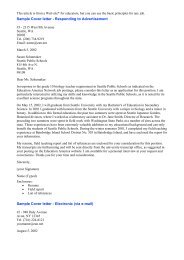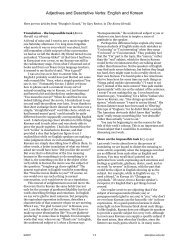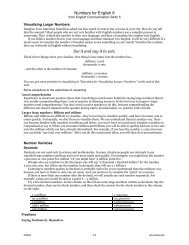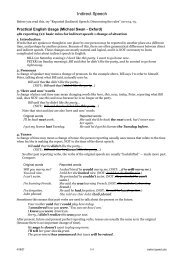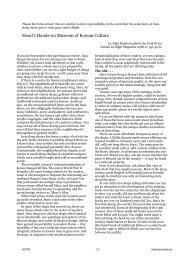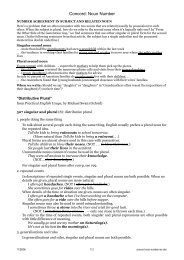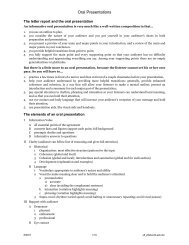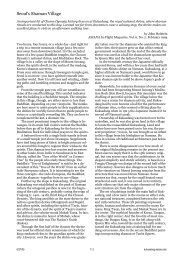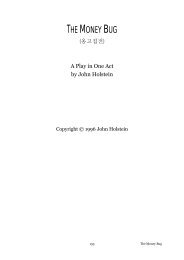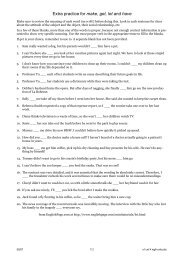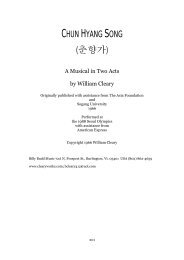The McCune-Reischauer Korean Romanization ... - Korea Mosaic
The McCune-Reischauer Korean Romanization ... - Korea Mosaic
The McCune-Reischauer Korean Romanization ... - Korea Mosaic
You also want an ePaper? Increase the reach of your titles
YUMPU automatically turns print PDFs into web optimized ePapers that Google loves.
12 This Commission was established by the National Academy of the <strong><strong>Korea</strong>n</strong> Language, a<br />
government agency under the Ministry of Culture and Sports.<br />
13 Kim-Renaud (1997): “<strong>The</strong>re is not a single nonnative speaker present at the meeting[s of<br />
the Commission]… Language and writing affairs have been under the jurisdiction of the<br />
Ministry of Culture and Sports for some time now, not the MOE [Ministry of Education]…<br />
<strong>The</strong>y have finally arrived at a consensus that they would work for a ‘one-to-one’ transliteration,<br />
not very different from the Yale-Martin system, except that they would change the ,<br />
, to , , and doubling these letters for the tense [doubled letter] series.”<br />
Lee (1999): This tentative proposal was presented by the National Academy of the <strong><strong>Korea</strong>n</strong><br />
Language, but was aborted after intense and widespread discussion “because of a lack of<br />
public consensus and [also because of] uneasiness about the economic crisis in the middle<br />
of 1997.”<br />
Kaliher (1997): “…the government ruled that the Ministry of Education’s (MOE) 1959 system<br />
be implemented on road signs nationwide, thus propagating such spellings as ‘Dogribmun’<br />
for Independence Gate, and fueling a wealth of associated jokes. (A couple of examples:<br />
<strong>The</strong> MOE spelling for Cholla Pukto, or North Cholla Province, inspired the riddle,<br />
‘What does a Jeonra Bugdo that no other bug does’ And a blackboard graffito used the<br />
MOE spelling of Park Chung Hee’s name to announce, ‘<strong>The</strong> new <strong>Romanization</strong> system has<br />
been approved by President Bag.’)…Foreign travelers could be forgiven for wondering why<br />
many of the signs on the road to Kangnung read ‘Gangreung.’ (Gangrene jokes abounded.).”<br />
Lee (1983): “Dogribmun, a typical example of awkward <strong>Romanization</strong> that many “Koreigners”…have<br />
enjoyed poking fun at, is in fact an illegitimate version of “Doglibmun” produced<br />
by a silly transcriber among the sign-painting authorities. According to my scrutiny of the<br />
Ministry of Education’s 1959 system, its first ‘note’ says that<br />
after any consonant<br />
should be written l rather than r: e.g., Sinla.”<br />
Kim-Renaud (1997): <strong>The</strong>re was a public hearing on May 6, with no foreigners in attendance,<br />
“although the meeting was announced in every newspaper, radio, and TV.” However, the<br />
1997 meeting sponsored by the <strong><strong>Korea</strong>n</strong> Language Research Center, attended by several<br />
Americans, was an attempt to get the input of foreigners.<br />
7/2/05 15/ 19 mr9912



